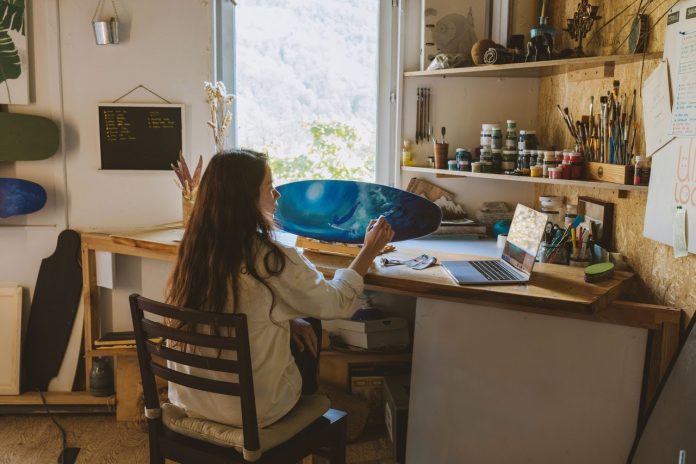
The journey of the artist is one of constant improvement and the pursuit of perfection. At least, that’s what it’s supposed to be. And if you’re like most people, you are always looking for ways to improve your craft. As complicated and dynamic as art is, this post condenses the various tips to self-improvement in the art world into five easy approaches.
In a nutshell, you will find some of these strategies and techniques to unleash your creativity and level up. These insights have taken several artists their entire lives to learn. Therefore, these are by no means ‘quick fixes.’ Without much ado, here are the five ways you can begin to improve your art today.
1. Find An Inspiring Work Environment
As obvious as this may sound, the budding artist is a product of the immediate environment. Thus if you find yourself in dirty, cluttered, messy, and toxic surroundings, don’t be surprised if you can’t create or improve your art. So if you’re looking for art inspiration, you need to ensure that your surroundings aren’t uncomfortable.
You have to first clean, organize, and prepare your creative space before and after every workday to do your best work. This helps to focus on what matters – your art. Remember to wash your paintbrushes and organize all materials like books, colors, canvas, etc.
2. Define Concept Before Starting
All art is a form of expression, and all expressions begin as concepts. In case you’re wondering, a concept is an idea formulated by the mind. As an artist, you need to properly define your concept before thinking about how to complete it. Usually, experienced artists will take the time to sketch out their concept in a sketchbook before work begins. If you don’t have a concept, you’re like an explorer without a map to your destination.
However, this doesn’t imply that your concept should firmly guide your creativity. You can still flow in the direction of artistic inspiration. The initial concept simply serves as the map, so you don’t get lost.
3. Element Composition
This art aspect encompasses all the visual elements that come together to make a complete work of art. You want to think about how you’ll arrange your colors, shapes, and shades to create your desired outcome. You can do this by adopting several compositional techniques that produce unique and aesthetic artworks.
One renowned principle to guide you during composition is The Rule of Thirds. Typically, amateur artists forget this rule entirely. But it is among some of the essential rules you’ll learn in photography. Applying this rule to your art will ensure your artwork has a focal point with color harmony and a good outlook.
4. Appreciate Negative Shapes and Spaces
The eye of the regular person is often trained to concentrate on the object in front of it. However, artists have a deep depression for the spaces around and between objects. Negative spaces are vital in art because they help put items into perspective and hold relative proportions and locations that objects do not have by themselves.
Training your eyes to see and appreciate the negative space and shapes will enable you to render your artworks like a pro. It is also one of the skills you need to draw real-life subjects accurately, such that your eyes can draw the exact subject it sees instead of what you know.
5. Understand Color at a Deeper Level
As an artist, you have to know and understand the color wheel. Red, yellow, and blue make up the three primary colors. You derive three secondary colors by mixing these three primary colors.
- Violet = Red + Blue
- Orange = Red + Yellow
- Green = Blue + Orange
Then you have six tertiary colors made from the mixture of two secondary colors. The color wheel tells you which colors complement each other and those that contrast. Next, you have to understand the warm and cool colors.
Generally, warm colors convey emotions like hunger, violence, aggression, and happiness, and they are based on yellow undertones. On the other hand, cool colors have calming visual effects based on blue undertones.
Bonus: Simplicity is The Ultimate Sophistication
Believe it or not, less is more in paintings and art. Therefore, an artwork cluttered with images, colors, and objects might end up distracting the viewer. At best, the clutter makes it difficult to identify the more valuable aspects of your work. Hence, you can improve your work if you can edit out all excess content.
Conclusion
Lastly, you will need a lot of patience, determination, and commitment to succeed as an artist. Like Pablo Picasso said, “Inspiration exists, but it has to find you working.” Unfortunately, there are no tips, tricks, or techniques that can replace hard work’s valuable quality. Remember to enjoy the journey, celebrate every little victory, always try to have fun, and never forget that art is all about self-expression.








